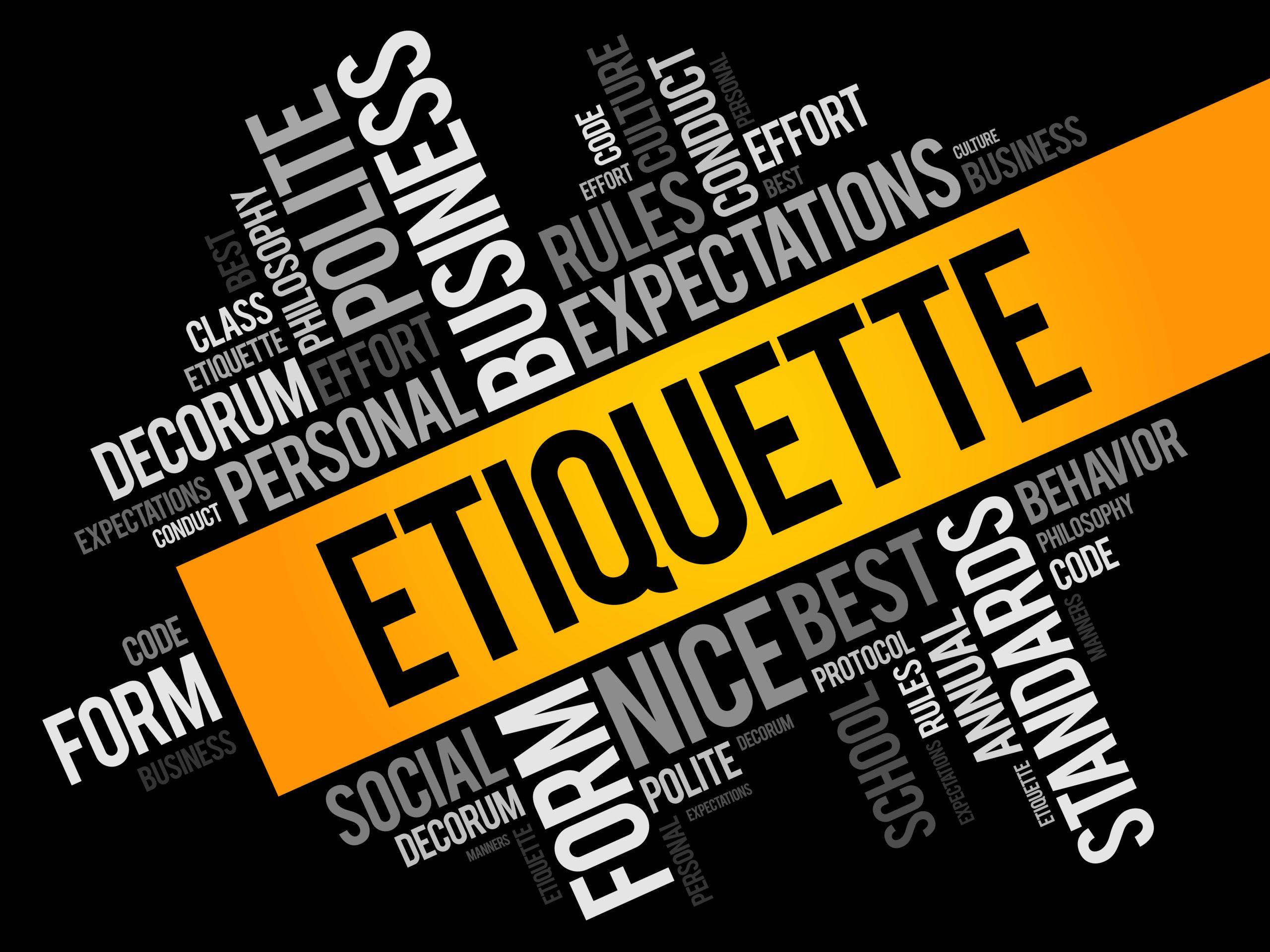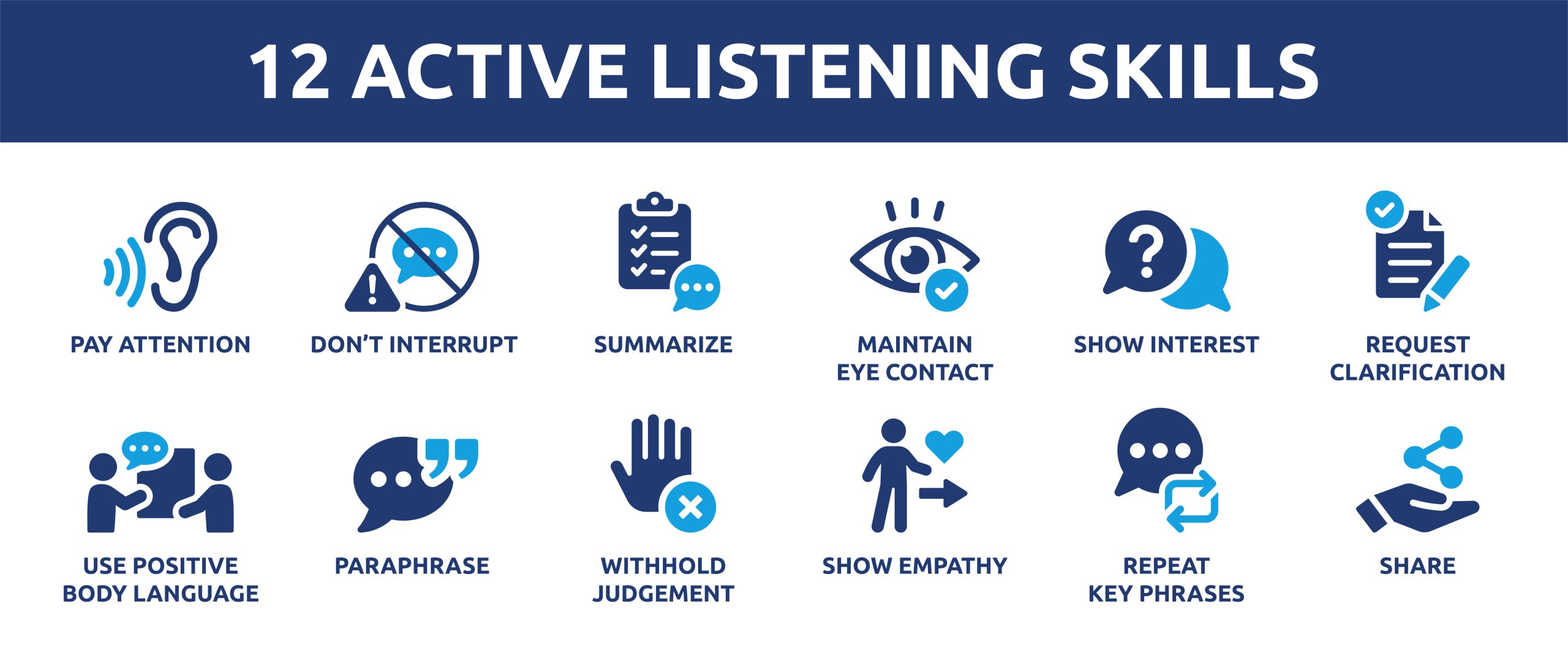Chapter 9: General Guidelines for Graceful Conduct
Chapter Learning Objectives
- 9.1 Explain the importance of respectful behavior, courtesy, and professionalism in various workplace interactions. (SLO 1)
- 9.2 Apply general etiquette principles to everyday business scenarios, including greetings, introductions, and respectful communication. (SLO 1, 2)
- 9.3 Analyze how graceful conduct contributes to a positive workplace culture and influences professional relationships. (SLO 1, 2, 5)

Graceful conduct encompasses a range of behaviors that demonstrate respect, courtesy, and adaptability in all interactions, regardless of the situation. In professional environments, where the stakes are often high and relationships are crucial, maintaining composure and treating others with dignity can set the tone for success.
Graceful conduct is about more than following rules—it is about embodying values such as empathy, patience, and integrity in every action. Whether navigating a tense conversation, working with individuals from different cultural backgrounds, or simply addressing daily challenges with poise, the ability to handle oneself gracefully is indispensable.
This chapter explores the fundamental principles of respect and courtesy, the art of responding to rudeness with professionalism, and the importance of cultural adaptability and common-sense practices in creating a positive and inclusive workplace.
The Principles of Respect and Courtesy
Respect and courtesy form the foundation of graceful conduct. These principles are not confined to grand gestures but are embedded in small, everyday actions that build trust and foster collaboration. Respect involves valuing the opinions, time, and contributions of others, while courtesy manifests through polite and considerate behavior.
Together, they create an environment where individuals feel appreciated and understood. Respecting time is a vital aspect of professional interactions. Time is a limited resource, and failing to honor it can disrupt schedules, delay projects, and strain relationships. Being punctual for meetings, responding promptly to emails, and respecting deadlines signal that you value others’ time and are reliable. A single late arrival or ignored deadline might seem trivial, but over time, these habits can erode trust and credibility.
Polite communication is the glue that holds professional interactions together. Simple phrases like “please,” “thank you,” and “excuse me” may seem basic, but they go a long way in creating a positive tone. Politeness also means choosing words carefully, especially during disagreements, to avoid unnecessary conflict. For instance, saying, “I see your perspective; here’s another approach to consider,” is far more constructive than outright rejecting someone’s idea.
Tips for Active Listening
Active listening is another critical element of respect. It involves fully engaging with the speaker, maintaining eye contact, and refraining from interrupting. Listening attentively shows that you value the speaker’s input and fosters a sense of mutual respect. It also allows for more thoughtful and constructive responses, improving the quality of conversations.
Active listening includes:
- Paying attention
- Don’t interrupt
- Summarize what you have heard
- Maintain eye contact while someone is talking to you
- Show interest with physical responses (nodding head, etc.)
- Request clarification if something doesn’t make sense
- Use positive body language
- Paraphrase
- Withhold judgement until the speaker has finished
- Show empathy
- Repeat key phrases
- Share what you know after you listen
Video: The Art of Active Listening
Watch this video” The Art of Active Listening” from Harvard Business Review to help reflect on whether YOU are a good listener:
Diverse Workplaces
Acknowledging differences is essential in today’s diverse workplaces. Individuals come from varied backgrounds, experiences, and perspectives, and recognizing these differences enriches interactions. Inclusivity is not just about avoiding offense but actively making others feel valued and understood. For example, ensuring everyone has the opportunity to speak during meetings demonstrates respect for diverse viewpoints and reinforces a culture of courtesy.
Self-Evaluation: Respect and Courtesy in Professional Settings
This self-evaluation is designed to help you reflect on your level of self-respect and courtesy in professional interactions.
For each statement, rate yourself on a scale of 1 to 5:
1 = Never, 2 = Rarely, 3 = Sometimes, 4 = Often, 5 = Always
Questions
1. I consistently arrive on time for meetings, appointments, and professional commitments.
2. I actively listen during conversations, avoiding interruptions and giving others time to express their thoughts.
3. I maintain a calm and respectful tone, even when I disagree with someone.
4. I make an effort to acknowledge and respect the diverse perspectives of my colleagues or team members.
5. I show appreciation by thanking others for their contributions or assistance.
6. I use polite language, such as “please” and “thank you,” in my verbal and written communication.
7. I prioritize respecting others’ time by being prepared and keeping interactions efficient.
8. I avoid dismissing or minimizing others’ ideas, even when I disagree with their point of view.
9. I maintain a professional demeanor in situations of conflict or stress.
10. I give credit to others for their contributions and acknowledge their achievements openly.
Scoring:
• Add up your scores for all 10 questions.
• If you scored 40–50: You demonstrate a high level of respect and courtesy. Your behavior fosters trust, collaboration, and a positive professional environment.
• If you scored 30–39: You generally show respect and courtesy but may have areas for improvement. Reflect on where you can be more consistent in your interactions.
• If you scored 20–29: You may struggle with certain aspects of respect and courtesy in professional settings. Consider focusing on active listening, tone, and appreciation to strengthen your relationships.
• If you scored 10–19: This score suggests significant room for growth. Review the principles of respect and courtesy outlined in this chapter and practice incorporating them into your daily interactions.
Responding to Rudeness with Professionalism
Encountering rudeness can be challenging, but it provides an opportunity to demonstrate composure and professionalism. How you respond to negativity often says more about your character than the initial provocation. By remaining calm, constructive, and focused, dignity while encouraging more respectful interactions in the future.
The first rule in responding to rudeness is to stay composed. Emotional reactions, such as raising your voice or appearing visibly upset, often escalate the situation. Instead, take a moment to breathe and collect your thoughts before responding. A calm demeanor signals self-control and prevents the conversation from spiraling into unproductive conflict.
For instance, if a colleague makes a sharp remark, pausing briefly before replying allows you to choose your words carefully. Choosing your words carefully is the cornerstone of professional responses. Direct but respectful language can address the issue without further aggravating it. For example, rather than accusing someone of being rude, you might say, “I’d like us to keep this discussion productive. Can we focus on finding a solution?” This approach not only addresses the behavior but also redirects the conversation toward a positive outcome. It is important not to take rudeness personally.
Often, unprofessional behavior stems from stress, frustration, or unrelated external factors. Recognizing that rudeness is not necessarily a reflection of your actions can help you remain empathetic and avoid unnecessary offense. This perspective also allows you to approach the situation with greater understanding and tact.
Redirecting the focus to the task at hand is another effective strategy. For instance, if a colleague criticizes you harshly during a meeting, acknowledging their point while steering the conversation back to solutions demonstrates professionalism. A response like, “I see your concern. Let’s discuss how we can address it effectively,” keeps the discussion constructive. In cases where rudeness persists, setting boundaries is essential.
Firm but polite statements like, “I’d prefer we address this in a more constructive manner,” communicate that unprofessional behavior is unacceptable without escalating the conflict. If necessary, involve a manager or HR representative to mediate ongoing issues.

Cultural Adaptability
Cultural adaptability is increasingly important in today’s globalized workforce. Professionals often interact with individuals from different cultural backgrounds, each with its own norms, values, and expectations. Adapting to these differences demonstrates respect and sensitivity, fostering trust and minimizing misunderstandings. Understanding cultural norms is the first step in adaptability.
Different cultures have unique communication styles, gestures, and customs that influence interactions. For example, while direct eye contact may be seen as a sign of confidence in Western cultures, it might be considered disrespectful in some Asian cultures. Familiarizing yourself with these nuances can prevent unintended offenses and build stronger connections.

Adapting your communication style is equally important. In some cultures, brevity and efficiency are valued in conversations, while others prioritize relationship-building and detailed discussions. Recognizing and adjusting to these preferences shows cultural awareness and enhances collaboration.
Avoiding assumptions is crucial for fostering inclusivity. Stereotyping or making broad generalizations about individuals based on cultural backgrounds can lead to misunderstandings and harm relationships. Instead, approach each interaction with curiosity and an open mind, asking questions and learning from your experiences.
Inclusivity extends beyond cultural understanding to encompass various individual needs and perspectives. For example, accommodating dietary restrictions at events, ensuring accessible meeting spaces, or providing materials in multiple languages demonstrates thoughtfulness and inclusivity.
Common sense and empathy are the foundation of cultural adaptability. Being mindful of your tone, allowing colleagues to finish their thoughts, and offering help when needed reflect an intuitive approach to graceful conduct. These small actions collectively create an atmosphere of respect and collaboration.
Practical Examples of Graceful Conduct
Imagine a colleague repeatedly interrupts you during a presentation. Instead of reacting defensively, you maintain eye contact and calmly say, “I value your input and will address it shortly, but I’d like to finish this point first.” This response asserts boundaries while maintaining professionalism.
Consider attending a business dinner with international clients who value formal greetings. Instead of offering a casual handshake, you take the time to learn their preferred greeting style, such as a bow or using formal titles. This attention to cultural norms leaves a positive impression and builds rapport.
Finally, suppose you receive critical feedback from a manager delivered in a harsh tone. Instead of reacting emotionally, you say, “Thank you for the feedback. Could you provide more specifics on how I can improve in this area?” This approach demonstrates maturity and a willingness to grow.
Conclusion
First impressions are powerful and often lasting, especially in professional environments where credibility and trust are essential. Understanding the elements that contribute to a strong first impression-such as body language, tone of voice, and cultural awareness-empowers you to present yourself with confidence and professionalism.
How to cite this chapter:
Hamby, C. (2025). Chapter 9: General Guidelines for Graceful Conduct. In Pouska, B. (Ed.), Business Professionalism. New Mexico Open Educational Resources Consortium Pressbooks. https://nmoer.pressbooks.pub/businessprofessionalism/
Licenses and Attributions
External Resource
Harvard Business Review. (2022). The art of active listening [Video]. The Harvard Business Review Guide.
Original chapter source: Adapted from Navigating the Professional World: A Guide to Business Etiquette by Courtney Hamby,


